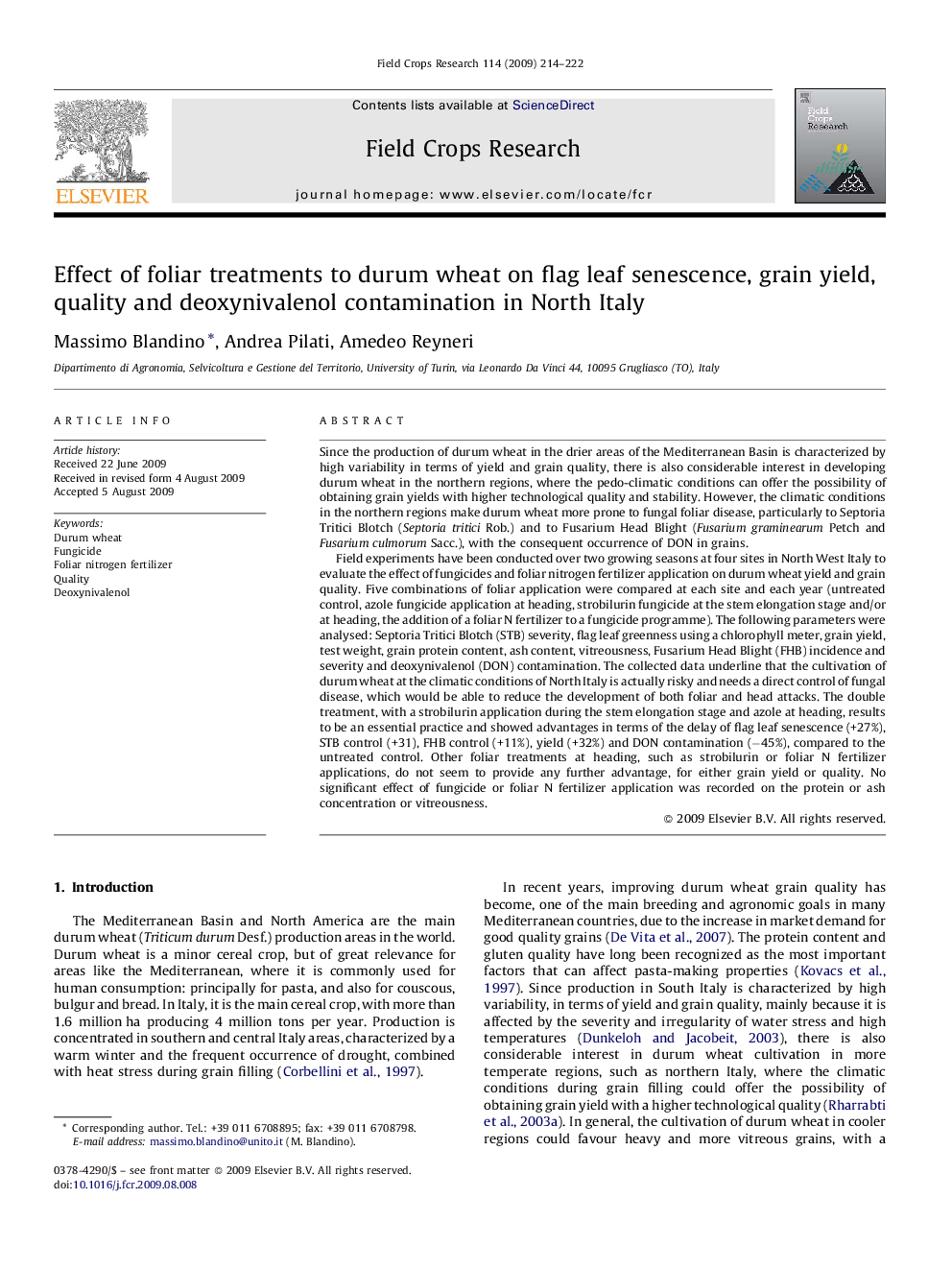| کد مقاله | کد نشریه | سال انتشار | مقاله انگلیسی | نسخه تمام متن |
|---|---|---|---|---|
| 4511111 | 1321892 | 2009 | 9 صفحه PDF | دانلود رایگان |

Since the production of durum wheat in the drier areas of the Mediterranean Basin is characterized by high variability in terms of yield and grain quality, there is also considerable interest in developing durum wheat in the northern regions, where the pedo-climatic conditions can offer the possibility of obtaining grain yields with higher technological quality and stability. However, the climatic conditions in the northern regions make durum wheat more prone to fungal foliar disease, particularly to Septoria Tritici Blotch (Septoria tritici Rob.) and to Fusarium Head Blight (Fusarium graminearum Petch and Fusarium culmorum Sacc.), with the consequent occurrence of DON in grains.Field experiments have been conducted over two growing seasons at four sites in North West Italy to evaluate the effect of fungicides and foliar nitrogen fertilizer application on durum wheat yield and grain quality. Five combinations of foliar application were compared at each site and each year (untreated control, azole fungicide application at heading, strobilurin fungicide at the stem elongation stage and/or at heading, the addition of a foliar N fertilizer to a fungicide programme). The following parameters were analysed: Septoria Tritici Blotch (STB) severity, flag leaf greenness using a chlorophyll meter, grain yield, test weight, grain protein content, ash content, vitreousness, Fusarium Head Blight (FHB) incidence and severity and deoxynivalenol (DON) contamination. The collected data underline that the cultivation of durum wheat at the climatic conditions of North Italy is actually risky and needs a direct control of fungal disease, which would be able to reduce the development of both foliar and head attacks. The double treatment, with a strobilurin application during the stem elongation stage and azole at heading, results to be an essential practice and showed advantages in terms of the delay of flag leaf senescence (+27%), STB control (+31), FHB control (+11%), yield (+32%) and DON contamination (−45%), compared to the untreated control. Other foliar treatments at heading, such as strobilurin or foliar N fertilizer applications, do not seem to provide any further advantage, for either grain yield or quality. No significant effect of fungicide or foliar N fertilizer application was recorded on the protein or ash concentration or vitreousness.
Journal: Field Crops Research - Volume 114, Issue 2, 10 November 2009, Pages 214–222